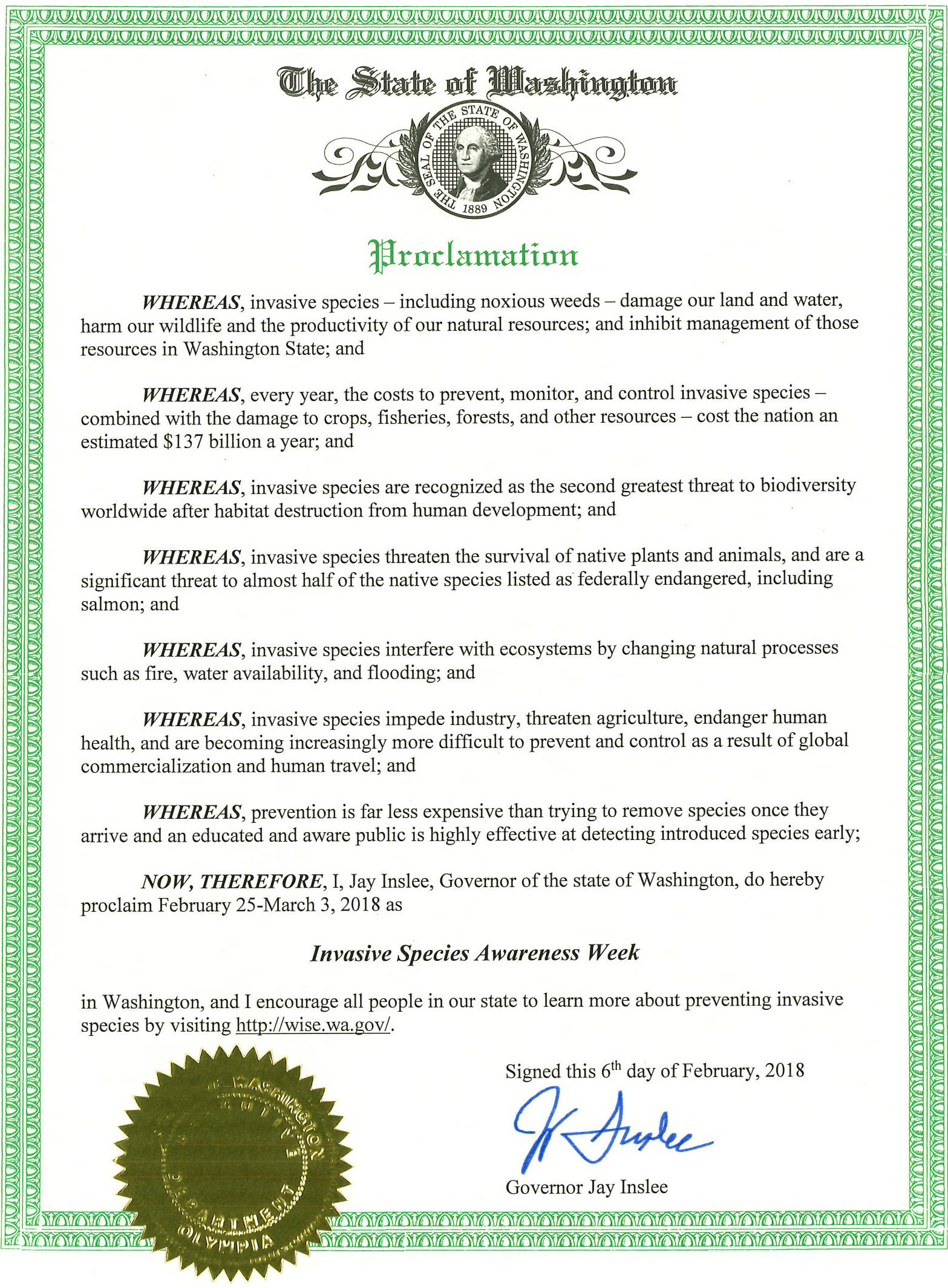Submitted by Jason Ontjes
San Juan County Noxious Weed Program Coordinator
Washington State Gov. Jay Inslee declared the week of Feb. 25 through March 3 as “Washington Invasive Species Awareness Week.” Inslee’s proclamation states that invasive species (including noxious weeds) cost the nation an estimated $137 billion per year in direct damage to crops, forests, fisheries and other resources.
A 2017 estimate for Washington State alone puts the price tag at $1.3 billion per year with a potential loss of 8,000 jobs, according to Justin Bush, the executive coordinator of the Washington Invasive Species Council. The state Legislature created the WISC in 2006 to develop policy-level direction, coordination and planning in efforts to combat harmful invasive species throughout Washington.
It is widely held that invasive species represent the second greatest threat to biodiversity throughout the world after human-caused habitat destruction, according to the WISC. Pacific salmon are amongst nearly half the federally listed endangered species that are significantly threatened by the introduction of invasive species, as recently demonstrated by the net-pen collapse off the coast of Cypress Island, which released tens of thousands of non-native Atlantic salmon into our Salish Sea.
A basic premise of the invasive species awareness campaign is that prevention is much more cost-effective than control. An ounce of prevention is worth a pound of cure, in other words. For example, a freshwater boater can check boat, gear and trailer for unwanted hitchhikers, such as the dreaded Eurasian watermilfoil, an aggressive aquatic weed that can form dense mats on the surface of ponds and lakes, impeding recreational activities, negatively impacting native fish stocks and affecting water chemistry (it provides good mosquito habitat, too). Without this simple check (and subsequent removal), this species can spread easily to another body of water, and the costs of control can be expensive.
Aware consumers can act to prevent the introduction of invasive species, too. Pet owners or animal breeders can unwittingly start local infestations of non-native species by releasing them into the wild. Introduced bullfrogs, for example, are known to eat our native Pacific tree frogs, other native amphibians, fish and even birds — whatever they can stuff into their mouths. So think twice before releasing that unwanted critter. A well-informed public that is aware of the risks posed by invasive species can help to quickly identify and respond to such invasions in what is phrased as, “early detection-rapid response.”
As we prepare for spring, check to make sure that the plant or animal offered for sale is not considered an invasive species in your area. Plant catalogs or retailers occasionally offer species or cultivars that are prohibited for sale in the state of Washington under its “Prohibited Plants List” (WAC 16-752), which is intended to stop the sale or transport of about 100 invasive, non- native plants that are considered deleterious to the state’s economy and ecosystems. Many of these listed species, and about half of those on the state noxious weed list (WAC 16-750), came to North America as ornamentals but have escaped cultivation, such as Scot’s broom, butterfly bush, yellow archangel and purple loosestrife, to name just a few local examples.
The vast majority of introduced plant species are benign or beneficial in Washington, with only a very small fraction of non-native plants becoming invasive, according to the Washington State Noxious Weed Control Board. Telling friend from foe in the natural world can be difficult at times, however.
So observe Washington Invasive Species Awareness Week by learning about local flora and fauna. Contact the San Juan County Noxious Weed Control Program at 360-376-3499 to help identify invasive plant species, or check the Washington Invasive Species Education site at wise.wa.gov, or the Washington Invasive Species Council at invasivespecies.wa.gov/index.shtml, for all things invasive.



